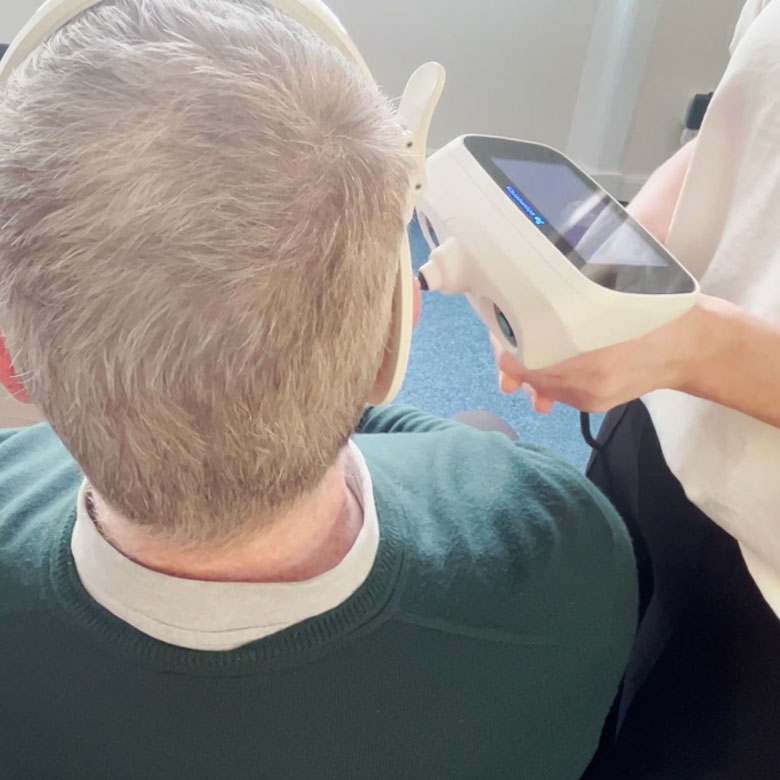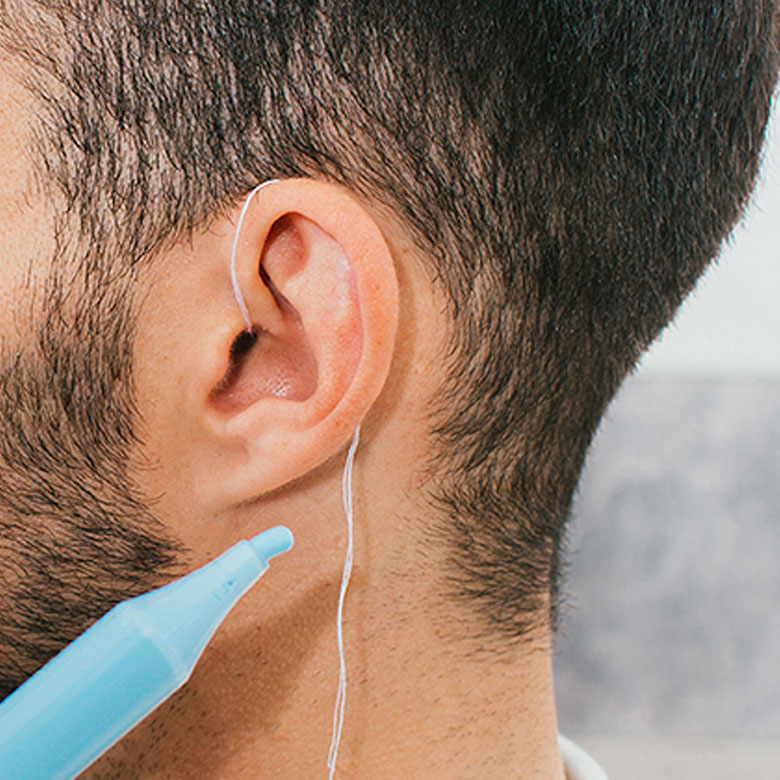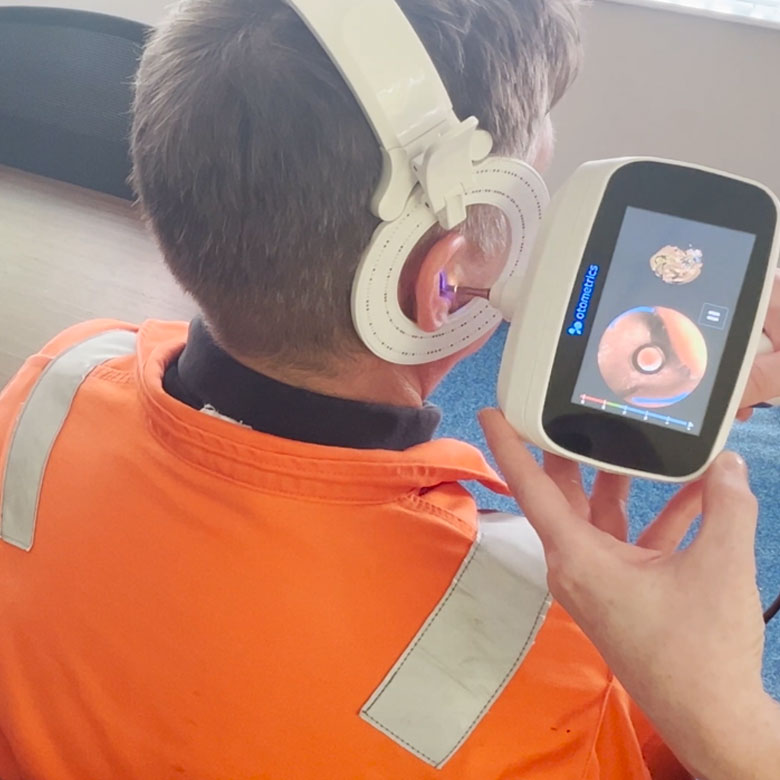THE PROCESS
The process of taking the ear impressions are carried out by fully qualified and certified professionals.
All our technicians are trained to the highest level with regular updates on new procedures and yearly assessments.

All our staff are BSHAA certified and covered by our comprehensive medical indemnity insurance.
The process begins with a client history where we discuss the procedure and alleviate any concerns. As well as an outer ear examination the technician will use a fibre optic otoscope to check the inside of both ear canals and the health of the tympanic membrane. If the canal and tympanic membrane are considered healthy then the technician will proceed to the next step in the process.
Ear Wax
Ear wax can sometimes cause a problem when taking a scan of the ear so All our impression technicians are qualified to remove excess wax using micro-suction or water irrigation.
Cluistrom technicians are qualified and insured to remove ear wax which ensures a perfect scan or mould of the ear canal
The laser has two operation modes-
Mode 1 uses a small ring laser that measures and maps the canal in a 360 degree process.
Mode 2 uses a separate laser with a horizontal beam that we use to map the outer cartilage of the ear and the concha (bowl). As the technician operates the laser scanner you will begin to see a new 3D image of your own ear and canal appear on the screen in front of you.
The resulting scans are labelled with a secure serial number and then sent via a secure network to the cloud server. Once stored and logged the scans can be downloaded for manufacture on one of the four new ProJet 3510MP Digital 3D Printers. This is often conducted overnight in a secure temperature and pressure controlled environment.
We make a great impression
This material is recognised as the most advanced available today.
Our unique process guarantees that the finished product is the truest likeness to the original impression taken and guarantees both comfort and acoustic performance over years of continued use.


